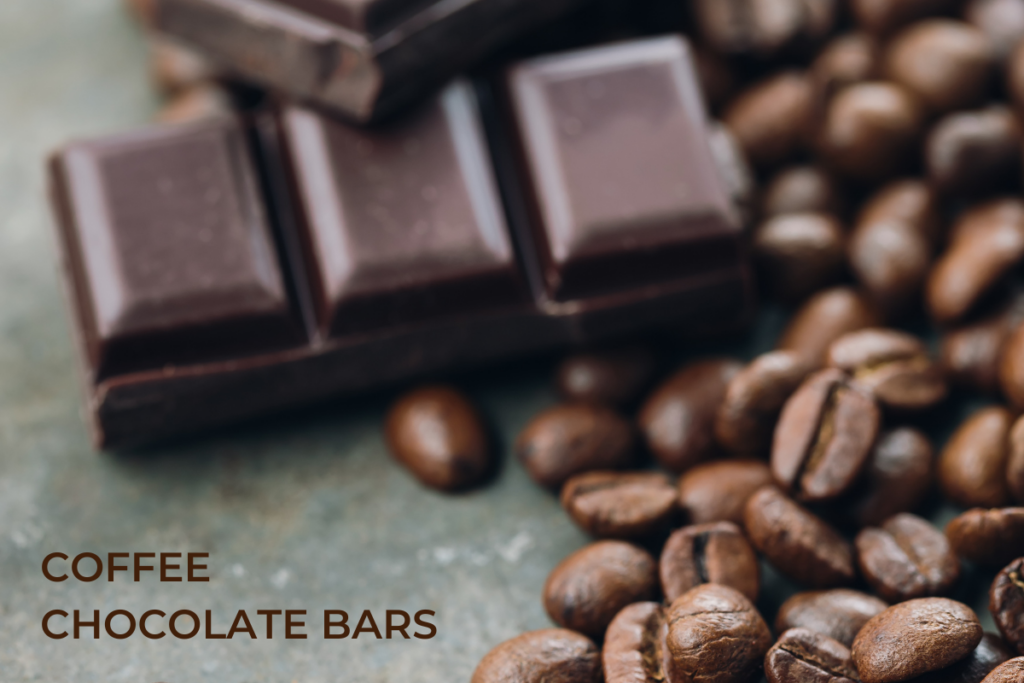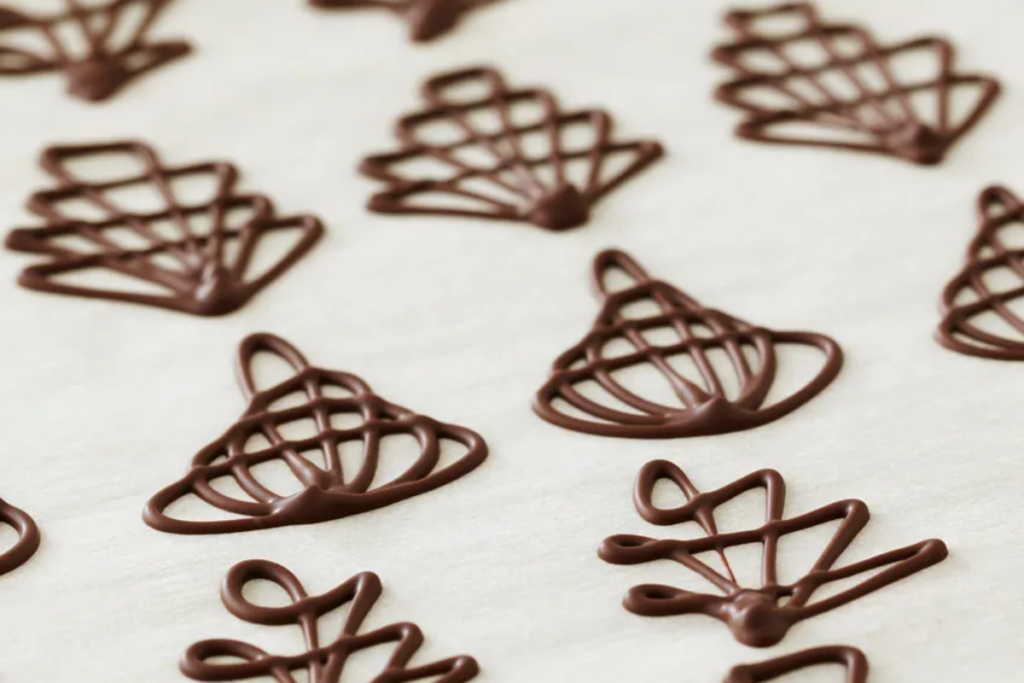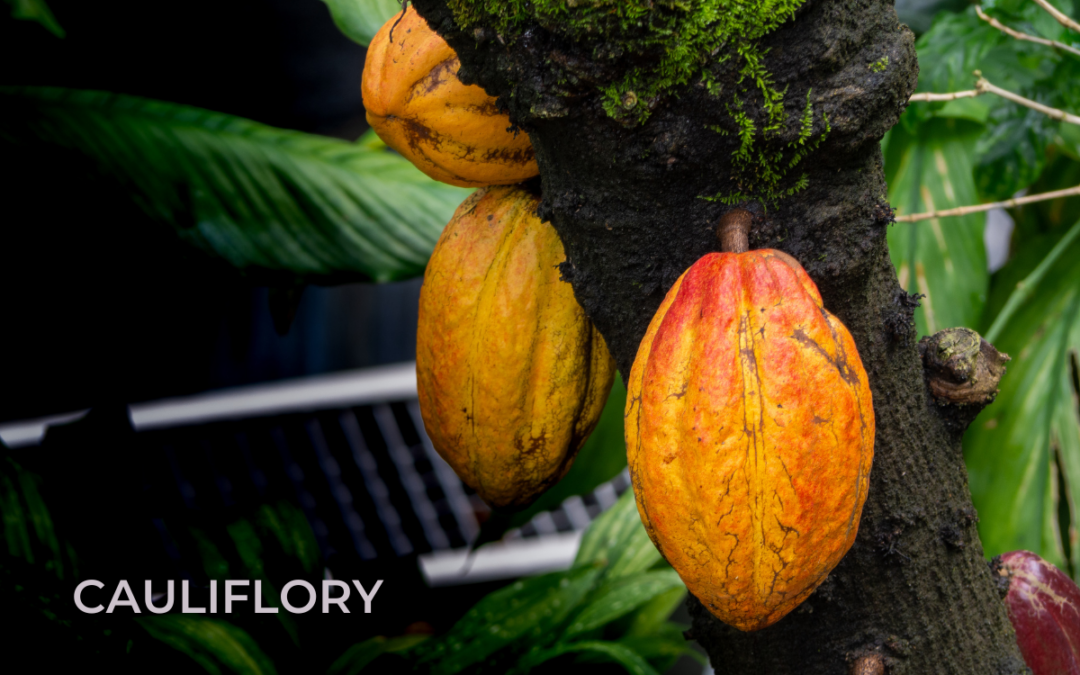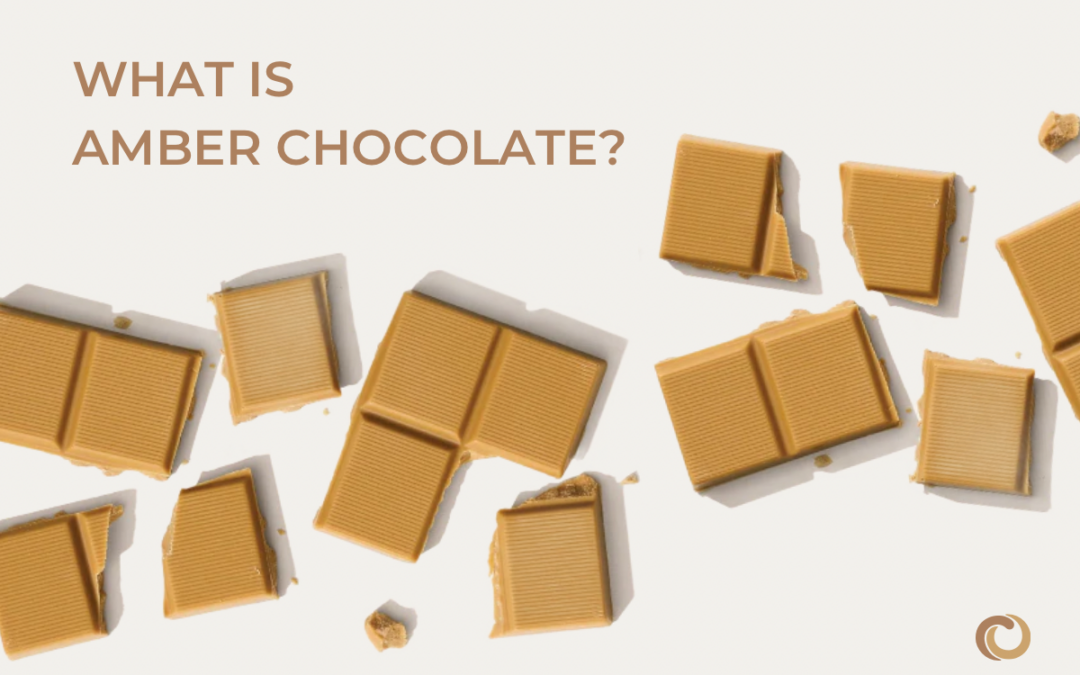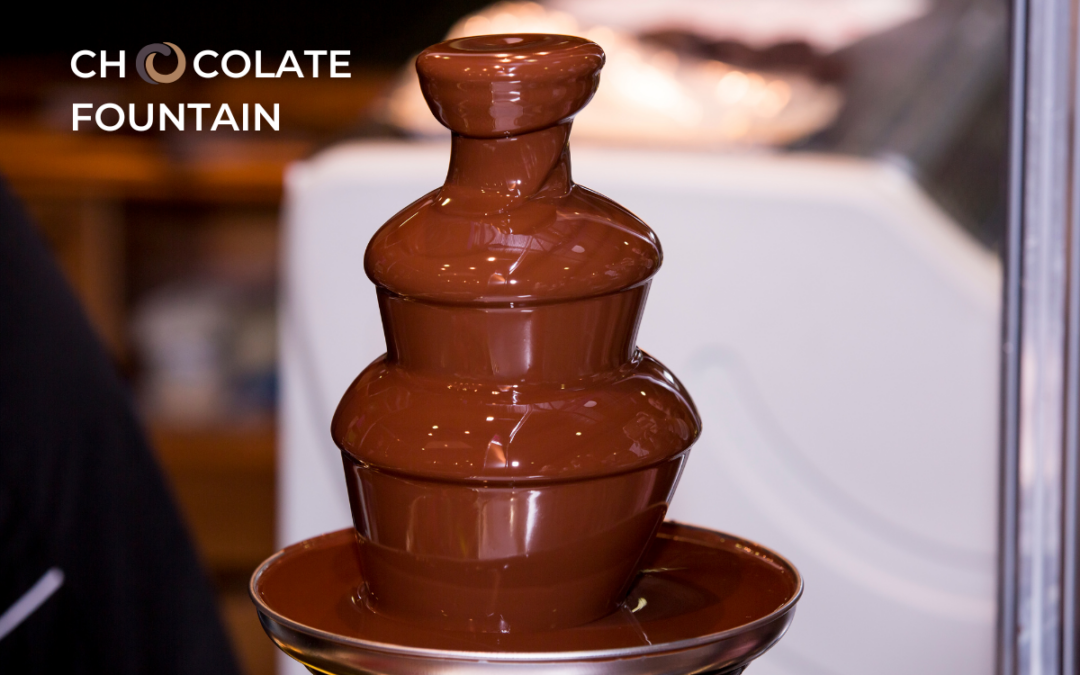Sugar is in almost everything we eat and drink. Most of us don’t realize how much sugar we consume until we start counting calories and trying to reduce our daily sugar intake. Additionally, there are so many types of sugars used in products that people are often unaware that it’s hiding in their meals (partially because there are so many different brand names or scientific names that show up in the ingredient list). And sugar claims on packaging can also be confusing, such as “no added sugars”, which still means that some form of sugar is used to sweeten the product.
Learning about sugar can be a bit complex, so we decided to research and sort through all the information with a focus on sugar alternatives for chocolate.

But first let’s understand what is sugar!
By definition, your traditional table sugar is sucrose, a disaccharide consisting of two sugar molecules (glucose and fructose) joined together, which occurs naturally and is found in all green plants.
Sugars, from the simple to the complex, are located in the tissues of most plants. Honey and fruits are natural sources of sugars, composed of mostly fructose and glucose. Sucrose is highly concentrated in sugar cane and sugar beets, making them ideal for efficient commercial extraction. This refined sugar or “table sugar” is used in prepared foods such as desserts or cakes, added to commercially available processed foods and beverages, and also be used as a sweetener for foods such as cereals.
Another cheap source of sugar is corn syrup, produced industrially by converting corn starch into sugars such as maltose, fructose and glucose

What are added sugars?
“Added sugars” include a variety of caloric sweeteners, including refined sugar and many other sweeteners that are classified as sugars. Added sugars do not include no-calorie or low-calorie sweeteners. The term “added sugars” was defined by the Food and Drug Administration in 2016 as sugars that are added during food processing, or packaged as such, and include monosaccharides and disaccharides.
Some specific examples of FDA’s definition of added sugars include:
- agave nectar
- brown rice syrup
- brown sugar
- coconut sugar
- glucose
- fructose
- honey
- invert sugar
- lactose
- Maltose
- corn syrup
- sucrose
- maple sugar
- molass
- nectar
- raw sugar
- dextrose
- malt sugar
- rice syrup
- high-fructose corn syrup
- white granulated sugar

Is sugar healthy?
As sugar consumption grew in the latter part of the 20th century, researchers began to examine whether a diet rich in sugar, especially refined sugar, was detrimental to human health. Excessive sugar consumption has been linked to obesity, diabetes, cardiovascular disease, and tooth decay. In 2015, the World Health Organization recommended that adults and children reduce their intake of free sugars to less than 10% of their total energy intake, and encouraged a reduction to less than 5%.
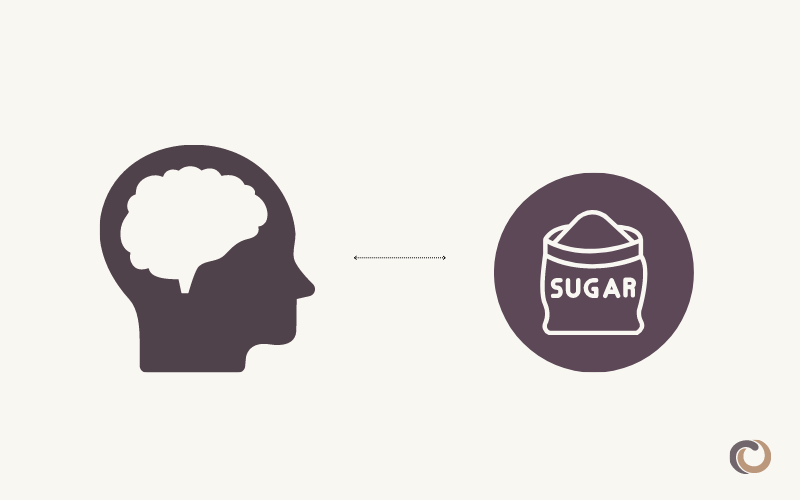
Why we are so addicted to sugar?
The brain runs on glucose, or sugar, which is a much-needed source of instant energy. That’s why the brain has learned to perceive sugar as a treat. Every time we eat sugar, our brain’s reward centers are activated and we want more and more. But now that sugar is more readily available in so many of the foods that we eat, we no longer have to work so hard to get a fix. And, of course, having it so easily accessible further encourages our addiction to sugar.
Artificial sweeteners
The term “artificial sweetener” refers to a substance that has been chemically made to mimic sugar. The more commonly known sugar substitutes fall into three main categories: aspartame (Equal), saccharin (Sweet’N Low) and sucralose (Splenda). These are zero-calorie sweeteners and are many times sweeter than table sugar. Artificial sweeteners are found in many “sugar-free” products like soda and chewing gum. These sweeteners are also used in lower-calorie desserts and other processed foods.
Many studies are currently underway to determine the health effect of these artificial sweeteners and scientists are studying the human gut microbiome to understand the long term effects of these alternatives. New studies have revealed that some popular artificial sweeteners have more negative health effects than originally thought. In addition, there is an ongoing debate about whether artificial sweeteners are even safe for consumption.
Some artificial sweeteners have been linked to cancer, metabolic syndrome and an increased risk of type 2 diabetes.
Most artificial sweeteners, such as aspartame, saccharin, neotame and sucralose, have a negative effect on blood glucose levels. Ingestion of these sweeteners triggers the release of insulin by the pancreas, mistaking them for glucose due to their perceived sweet taste. This increases insulin levels in the blood, which causes a decrease in receptor activity due to insulin resistance.
The research conducted by the Glucare Integrated Diabetes Center was carried out with two groups of people. The first group received artificial sweeteners while the second group did not consume any sweeteners. The study found that the insulin level of the first group was higher than that of the group that did not consume sweeteners.
Another problem with these artificial sweeteners is overconsumption. One pattern that researchers have observed is that people consider sugar alternatives as safe to consume in higher quantities. However, it has also been found that overconsumption of artificial sweeteners negatively affects our gut microbiota, which is essential for regulating blood sugar levels and overall health.
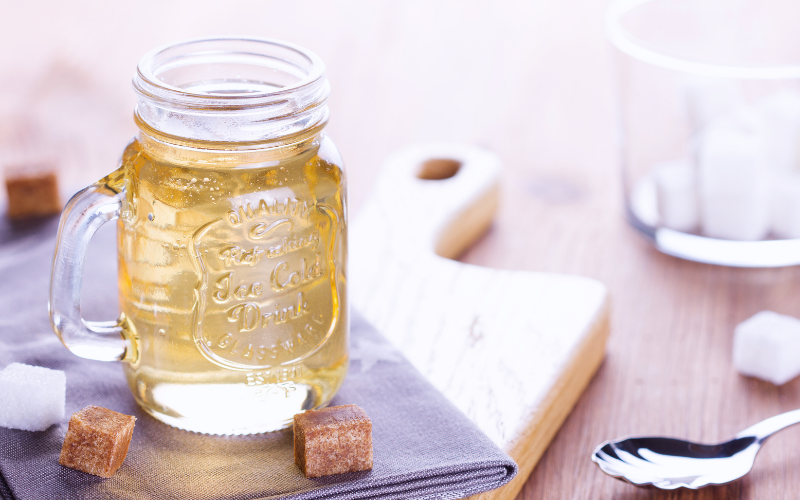
Sugar alcohols
There is another category of sugars that we haven’t mentioned, called sugar alcohols. So far, sugar alcohols seem to be better for you than artificial sweeteners. Although it is in the name, sugar alcohols do not contain any alcohol or ethanol found in alcoholic beverages (similar to how chocolate liquor doesn’t contain any liquor). Unlike artificial sweeteners, sugar alcohols are found in nature, mainly in some fruits and berries. Sugar alcohols provide fewer calories compared to normal sugar and are converted to glucose more slowly. Little or no insulin is needed to metabolize this sugar substitute and it does not cause blood sugar spikes as easily as regular sugar.
Some common examples of sugar alcohols are xylitol, maltitol, mannitol, sorbitol and erythritol. Among these examples, erythritol has the fewest calories, with only 24 calories per gram. One of the reasons sugar alcohols are gaining popularity is that sugar alcohols taste quite similar to regular sugar.
But, again, there is a downside. Studies have found that consuming sugar alcohols can cause bloating and digestive problems in some people. Their unique chemical structure makes it difficult for our bodies to break them down (which is why they are low in calories). However, once they reach the colon, they can begin to break down causing gas and bloating. That being said, it happens much less with erythritol than some of the other sugar alcohols.
Then there is the production cost. At the moment, extracting or producing sugar alcohols is still expensive, which means that it is still not accessible to everyone. Of the mentioned sugar alcohols, erythritol is the most promising, but it is also the most expensive.
Rare sugars
Rare sugars exist in nature in extremely low quantities. They are not fully digested by our bodies and, therefore, have a lower energy content. Two such rare sugars that are being commercialized, allulose and tagatose, have advantages in that they are similar to table sugar but have a low caloric content.
Allulose is 70% as sweet as table sugar but only 0.4 calories per gram, compared to table sugar which is 4 calories per gram. Tagatose is 90% as sweet as sugar and 1.5 calories per gram. So, unlike other natural sweeteners like stevia, they can be used as a near-volume for volume substitute for table sugar.
Both of these rare sugars also perform similar to table sugar in areas such as browning for baked foods and freeze-point depression for ice cream. Allulose and tagatose are also used to complement high-intensity sweeteners in products such as chocolate and soft drinks.
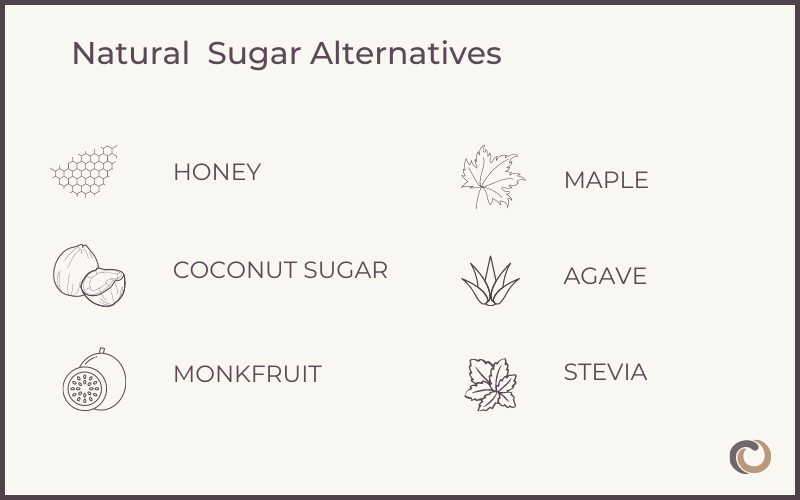
Natural sweeteners
Let’s talk about natural sweeteners. These include honey, agave nectar, stevia and other forms of sugar that are favored for being more natural or unprocessed than table sugar or sugar alcohols. To be clear, these natural sweeteners are still considered added sugars, and many of them still undergo some form of processing before appearing on the shelf. And again, these natural sweeteners, like table sugar, are broken down into glucose and fructose during digestion, meaning there is no scientific evidence that the form of sugar found in natural sweeteners is any better than table sugar.
There is a belief that if it comes from nature, it has to be good for you. While in a sense this may be true, remember that refined sugar also comes from nature (beets and sugar cane). And even though they come from nature, natural sweeteners are also very different from each other.
Alternative sweeteners for chocolate
Here is a breakdown of the four most popular natural sweeteners that you can use to sweeten chocolate:
Honey
Replacing honey for sugar in chocolate is possible, even though honey has high water content. Using honey, you can maintain a similar sheen and snap as chocolate made with sugar, but you get the benefits of honey instead!
You will need less honey to get the same amount of sweetness you get from table sugar. Also, with honey, you don’t get empty calories as you do with regular sugar. If you are thinking of swapping honey for a sweetener in your chocolate, you should make sure it is a high-quality one because some of the ones on the market may be mixed with sugar syrup.
Stevia
Stevia has long been a popular choice for health food lovers because it contains no calories and is extracted from the stevia plant. In terms of sweetness, it is 200-300 times as sweet as table sugar and you’ll need a lot less of it to get the same sweetness. This can make stevia a complicated substitute for table sugar since it doesn’t add any bulk to recipes.
Although the sweetness is there, stevia has an aftertaste that affects the quality of the experience you get from your treat. You also have to be careful how stevia is processed. In order to increase production and lower costs, some companies sacrifice the quality and organic nature of the stevia that comes in packages. A healthier and potentially safer option is to grow your own stevia which can easily be extracted from the leaf itself.
When making chocolate with stevia make sure to slowly increase the amount of stevia powder testing each time to make sure you don’t add too much sweetness.
Monk fruit Powder
Monk fruit sweetener is made from the dried fruit of the luo han guo vine. It is a calorie-free sweetener and suitable for diabetics. To date, there are no known side effects associated with monk fruit.
The taste of monk fruit may be unusual for some, as it comes with a bit of bitterness at the end. Much like stevia, it is very sweet, about 150-250 times sweeter than table sugar. And similar to stevia, it is also less accessible and more expensive than other sweeteners. Some companies may blend it with other sweeteners to improve taste and save costs. Be sure to read the label and purchase a good quality sweetener.
Coconut sugar
Coconut sugar is obtained from the flowers of coconut trees (not to be confused with cacao or cocoa trees) and is minimally processed. The sap from the coconut tree drips from the cut flower stalks and is dried to produce a sweetener that looks much like brown sugar.
Although it is a healthier and less processed option than table sugar, coconut sugar still contains some fructose and, like any other sweetener, is best consumed in moderation.
When making chocolate with coconut sugar make sure to grind it down to a finer consistency to avoid the heavier coconut sugar granules sinking into the bottom of your chocolate.

How to use sugar alternatives in your chocolate
There is no perfect substitute sweetener that can perfectly replace sugar in chocolate. But, there are some artificial, natural and rare sweeteners that can recreate a similar texture and flavor to your chocolate.
Table sugar (sucrose) provides sweetness, bulk, softening, and preservation which might be the same for other sugar replacements. Replacing the functionality of sucrose is quite difficult, and it is necessary to take into account regulatory issues, flavor profile, nutritional objectives, digestive tolerance, and shelf life issues when making the switch.
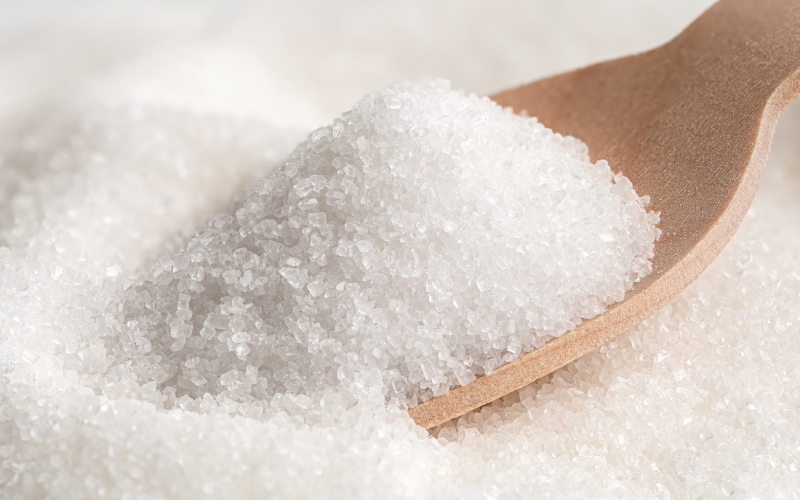
Properties & performance in sugar replacement
Bulking sweeteners (meaning that they have a similar volume to table sugar) include glucose, fructose, sugar alcohols, and rare sugars. When bulking sweeteners are used to replace sucrose, the usage level is often close to one-to-one.
Non-bulking sweeteners include sucralose, stevia and monk fruit. These high-potency sweeteners are used at very low volumes and need to be combined with a bulking agent in order to maintain the same texture and flavor in the final product.

Chocolate sweetened with date sugar, coconut sugar, and brown sugar.
In general, any and all of them can be used, but many of them contain a higher percentage of moisture. As you may know, water and chocolate do NOT get along well, so these should be used with caution if you are planning to add them to your chocolate processing equipment. And make sure that they are sufficiently dry (you can dry them in a low-temperature oven). The combination of the higher moisture content, as well as the structure of the sugar, can change the final texture of the resulting chocolate.
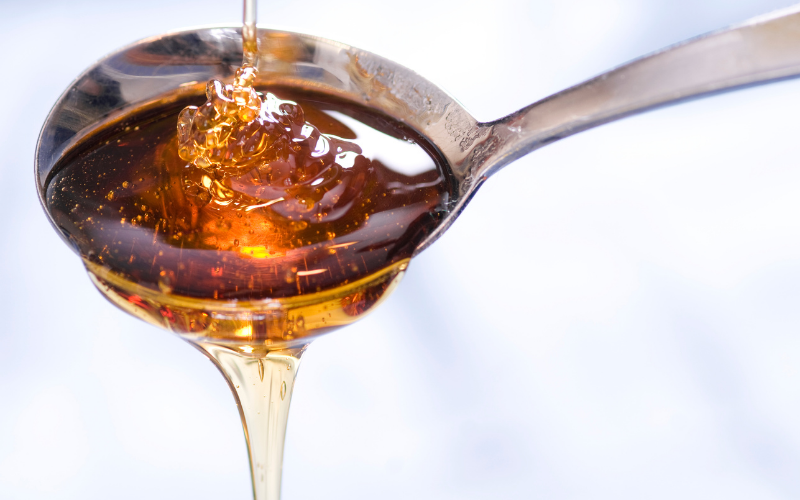
Chocolate sweetened with syrup, honey or agave
You can also use honey, agave and other syrups to replace sugar in your chocolate bars, so the final product may resemble chocolate, but the texture and flavor may be a little different. Given the high moisture content (for example, honey is about 18% water), these sweeteners should never be added to your chocolate processing equipment. They can be stirred into fully processed chocolate and shouldn’t result in a gritty texture since they are not powdered or crystalline like other sugar replacements. However, be aware that these sweeteners may affect the temper of your chocolate and that honey and agave may distract from the chocolate flavor.
TIP: When incorporating honey, agave or syrups into your chocolate, start with unsweetened 100% chocolate and then stir very gently until fully incorporated and smooth.
Chocolate sweetened with stevia or monk fruit powder
Another option is sweetening with Stevia or monk fruit powder, but don’t forget these are very, very sweet – As in hundreds of times sweeter than regular table sugar, so very little is needed. This also means that the usual bulk that you get from granulated sugars will be missing. This will affect your chocolate in two ways. First, the mouthfeel of the chocolate will be closer to that of a 100% dark chocolate bar since the sugar crystals will be missing. And second, the intensity of the chocolate will be closer to 100% dark chocolate since the flavor isn’t being diluted by the large volume of sugar that is typically used. If you want to lessen the intensity of the chocolate, you’ll have to find some kind of bulking agent that can replace the missing sugar. One good option is to combine monk fruit powder with another sweetener such as erythritol.
The bottom line
So, which sweetener should you choose? Between simple sugars, artificial sweeteners or natural sweeteners, it really depends on your dietary needs. For people who are diabetic, have dietary restrictions or have chosen to cut out refined sugars from their diet, there are some excellent options for delicious chocolate using a variety of alternative sweeteners. And it doesn’t have to be either/or – you can mix and match different sweeteners to find the right balance of flavor, texture and health.
Again, while all of these options are safe to consume in moderation, don’t forget that the bulk of your diet should consist of foods with no added sweeteners: foods like whole grains, fruits, vegetables, lean proteins, dairy products, etc.
At the end of the day, eating sweets should be a joyful and rewarding experience. The best way to enjoy chocolate is with the peace of mind knowing that you and your family are eating something healthy and equally rewarding. Enjoy!



